Norton Family History & Genealogy
Norton Last Name History & Origin
AddHistory
We don't have any information on the history of the Norton name. Have information to share?
Name Origin
We don't have any information on the origins of the Norton name. Have information to share?
Spellings & Pronunciations
We don't have any alternate spellings or pronunciation information on the Norton name. Have information to share?
Nationality & Ethnicity
We don't have any information on the nationality / ethnicity of the Norton name. Have information to share?
Famous People named Norton
Are there famous people from the Norton family? Share their story.
Early Nortons
These are the earliest records we have of the Norton family.
Norton Family Members
Norton Family Photos
Discover Norton family photos shared by the community. These photos contain people and places related to the Norton last name.

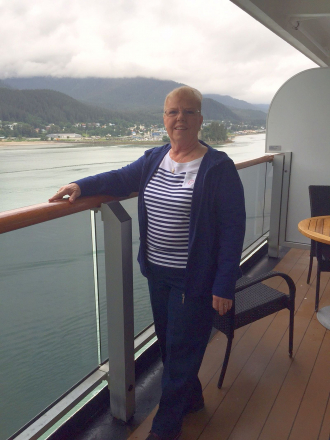

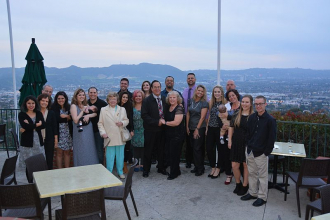

People in photo include: Annette Norton, Marvin Whitkanack, and John Whitkanack
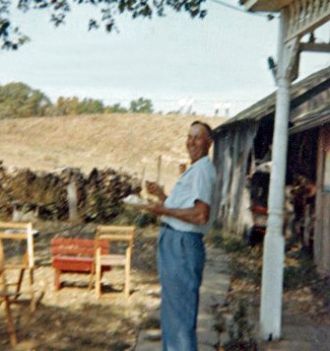
BIRTH 23 DEC 1913 • Marshall, Clark County, Illinois
DEATH 13 AUG 1972 • Marshall, Clark, Illinois, United States of America

BIRTH ABT 1868 • Indiana
DEATH 1 MARCH 1960 • Dennison, Clark County, Illinois, USA
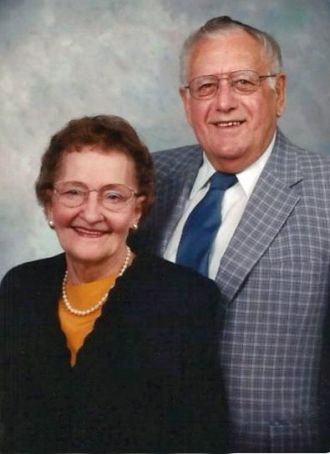
People in photo include: Mary Lou Howdyshell and James v. Norton
Norton Family Tree
Discover the most common names, oldest records and life expectancy of people with the last name Norton.
Updated Norton Biographies

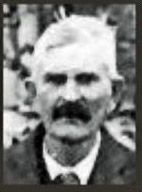

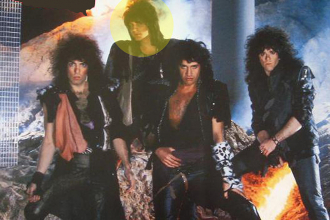
Popular Norton Biographies





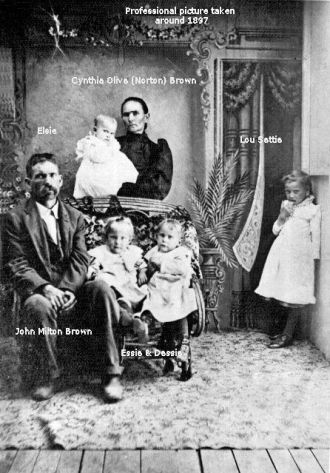

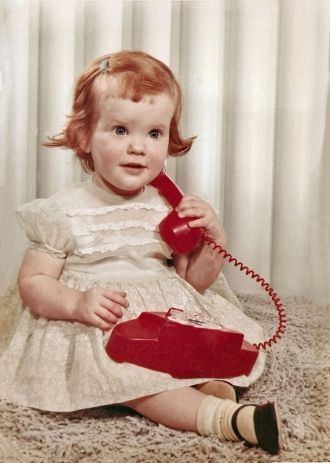

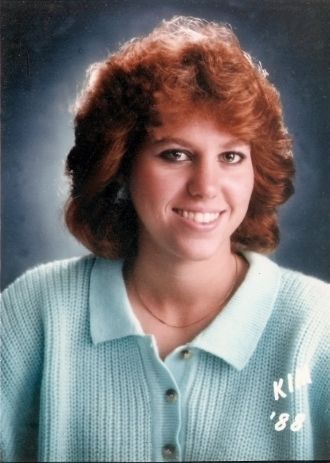

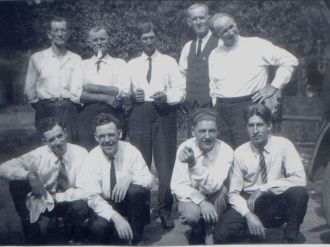

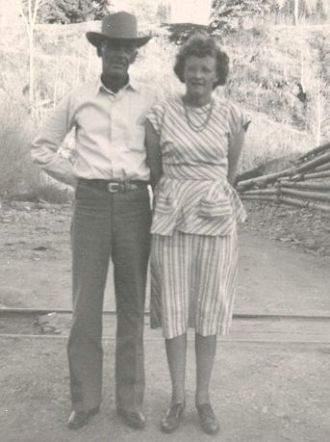

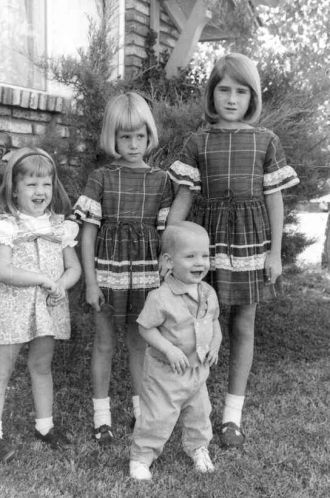



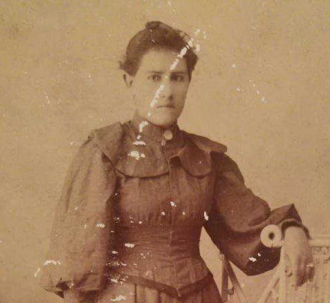



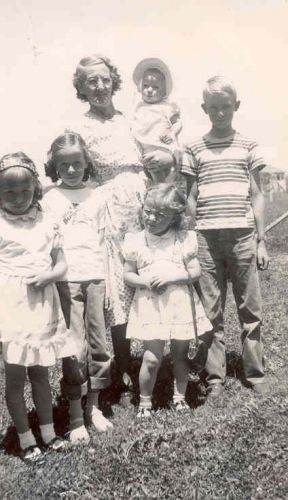
Norton Death Records & Life Expectancy
The average age of a Norton family member is 72.0 years old according to our database of 26,246 people with the last name Norton that have a birth and death date listed.
Life Expectancy
Oldest Nortons
These are the longest-lived members of the Norton family on AncientFaces.
Other Norton Records
Share memories about your Norton family
Leave comments and ask questions related to the Norton family.
It is said that strong memories can many times be associated with traumatic events and in my case my earliest has to do with intense pain. When I was about five years old I developed an ear infection which resulted in mastoiditis and I can remember when the specialist who was recommended by our family doctor came to our home at 603 Garfield Avenue in Jersey City, New Jersey to examine me, and my mother's tearful reaction when he told her that I would have to be hospitalized and operated on to drain the abscessed ear. I can still remember fighting the ether mask and how sick to my stomach I was when I finally awoke and also how heavy my head felt when I tried to get up. The next time I was hospitalized and given ether, I was a little older and wiser and did breathe slowly and deeply as I was told and as a result did not suffer the same after effects. This was for a minor overnight stay to remove my tonsils and adenoids when I was about eight years old. I was the first born and may have been a little premature because I weighed only about five pounds. My brothers and my sister were bigger and were in the seven to eight pound range at birth. I only mention this because I seemed to be the one who was to get all the childhood diseases and one of the worst was a very bad case of scarlet fever. This was when I was about ten and I was kept under quarantine at home. I was isolated in a small room which had to be kept dark to protect my eyes and the doorway was covered by a sheet dampened by a solution of Lysol. The effect of the fever caused a mild heart murmur and as I continued to grow up, a gradual lessening of flexibility in my joints. I remember this very well because in junior high school we had to take physical education under the supervision of a special teacher in a gymnasium (in elementary school we just went outside to play games while the teachers watched) and the special teacher, a Mr. Schenkle, a grossly overweight, loud-mouthed, profane, bully was, to me, a sorry example to set as a result of physical education. Again, intense pain is the reason this is burned into my memory because when we were doing our exercises and were required to reach down and touch our toes, I could not get much further than my knees and Mr. Schenkle who loved to vocally excoriate "slackers" as he called the non-achievers, decided to help me by coming up behind me and pushing my back down. This just about finished me as he strained not only my back, but my hamstrings as well. I was not able to go to school for quite a while and never took physical education again. The subject is required under New Jersey state law but I was able to avoid it by having my doctor petition the school authorities to excuse me due to my heart murmur. I developed mastoiditis in my other ear when I was twelve years old but it was caught earlier and the operation was merely to puncture the eardrum to drain out the infection. It was performed at home by the same specialist, a Doctor Morris Pyle who had his office at Exchange Place in Jersey City. My most serious medical problem was a burst appendix which resulted in gangrene and peritonitis and almost cost me my life. I remember the pain. I had the attack in high school when I was just sixteen and the nurse sent me home. We had no telephone then and really never had an automobile (my father had won a car in a church raffle some years before but he was such a poor driver that my mother had him sell it. Jersey city was not a good place to have a car anyway because there was no place to garage the car or to park it.) I lived about two miles from the high school and started to walk home. When I was one block away from my house my appendix must have burst because I remember trying to hold myself upright by grabbing the pole that held the sign for Stegman Street and ocean avenue but I gradually slipped down to my knees and then blacked out. I do not know who got me home or how my mother got word to the doctor but it took time before he could get to me and make the arrangements to get me to the hospital. It was an emergency operation which was performed about midnight and the delay undoubtedly led to the serious nature of the infection. I was in the hospital for a month and was given the last rites of the church. I was kept under sedation by morphine not only for the pain but also to keep me from writhing and inadvertently pulling out the tubes which were feeding me but also draining the infection. I lost twenty five pounds and came out as a living skeleton. Our family doctor, George Brick (the one who sent me to Dr. Pyle, the specialist and who arranged for me to be sent to the St. Francis hospital for the appendectomy) gave my father a recipe for a tonic to help me gain back some of the weight I had lost. It was like an eggnog with milk and cinnamon but was fortified with sherry wine. My dad dutifully made this for me every day and at the same time made one for himself.
The corner grocery store in 1937 was a far cry from the supermarkets of today. As the clerk of the two man staff I had to sweep the sidewalk every morning, put up or down the awnings as the weather dictated, wash the display windows once a week and when the grocery delivery was made the truckmen would just put the barrels and boxes on the sidewalk, the manager would confirm the delivery, sign for it and I would have to move it all inside to the back storeroom. Also much of the items such as flour, sugar, butter, milk, eggs, potatoes, etc. had to be broken down into smaller amounts such as pounds, dozens, quarts, etc. This was my job also. I had to restock the shelves by carefully removing the old items, wiping the shelf and then replacing the old items in front of the newer ones. When the store was busy I also would wait on customers by physically moving about the store to bring whatever they wanted to the counter, wrapping it up and also delivering it to their home if that was requested. That was usually worth a ten cent tip! There were no scanners then so you had to know all the prices and you had to add up the total (twice as a matter of fact for the required confirmation).
After about a year I left Mr. Miller to work as an experienced clerk for the National Grocery Company at a salary of eight dollars a week. Grocery stores then were open six days a week from 8 am until 6 Monday through Thursday and from 8 a.m. until 9 p.m. on Friday and Saturday.
When I was eighteen I got a job with the Eagle Printing Ink Company as a shipping clerk on the recommendation of Pete Van Deusen who used to live next door to us on Garfield Avenue. Pete was seven years older than me and had the same job with Mr. Miller when he was just out of high school. He was a quality control inspector at the ink plant and was the manager of the company softball team in the jersey city industrial league. He wanted me to play on the company team and I agreed to do it. I had played for him once before in the Sunday softball league in Bayside Park in Jersey City.
About this time in my life I became a member of the Jersey City Lancers a local neighborhood sports club made up of young men for fun more than anything else. It was encouraged by the grownups because we played at the local parks or schools and generally kept out of trouble. Besides working at the ink plant and playing on their softball team in the summer, I also played softball and baseball for the lancers on Sunday in the summer and football in the fall and winter. I played football for the lancers on Thanksgiving day in 1939 and was hurt so that I could not go to work the next day at the ink company. Since we did not have a telephone, there was no way that I could report my reason for being absent and when I went to work on the following Monday I found out that I was fired. I went to the state unemployment office to see if I could register for benefits. (I was not sure if my circumstances were covered) and instead they sent me on an interview for a job with the Mutual Chemical Company of America a large bulk processing and refining company in Jersey City. They were looking to hire a traffic clerk. I had never worked as a traffic clerk before or even knew what one did but I had observed how the shipping room operated at the ink company and told them I was willing to learn and they hired me for fifteen dollars for a five and a half day, forty-four hour week. The traffic clerk job was to keep the necessary records of all of the incoming raw materials and the outgoing finished products. It involved both railroad and trucking and domestic and overseas shipments. I worked under the traffic manager who was also the office manager and paymaster and he encouraged me to go with him to the local traffic club when they had educational seminars in order to broaden my knowledge. When our country went to war against the axis in December, 1941 I felt particularly obliged to contribute because one of my friends from the lancers was killed in the attack on Pearl Harbor. He had joined the Navy only about six months before. I told them at the chemical company that I was going to enter the service and they said my job would be there when I returned. When I went to the navy recruiting office in New York City in early 1942 to enlist, I failed the physical because I was underweight, had bad hearing and the heart murmur. They suggested that I try to gain eight pounds to bring me up to their standard for my height and build to ensure that I had no chronic health problem which was keeping my weight so low and to be re-tested. It took me several months to gain the weight (I had to eat a lot of bananas and cream plus a regular high calorie diet) and when I was re-tested I was sent to the officer in charge, a full navy captain, who explained that he would have to make a recommendation because my hearing and heart were not 100%. He said the problems were slight but enough to keep me out under ordinary circumstances but this was wartime and if I still wanted to join the navy he would approve a limited duty enlistment which would mean I could not serve in the submarine service or in the naval flight service. I agreed and was sent to the U.S. Naval training station in Newport, Rhode Island for boot camp then to Bedford Springs, Pennsylvania for radio school and then to Noroton Heights, Connecticut for special advanced communication school. I was finally assigned to the United States Navy armed guard service facility at the Brooklyn Naval Armory in late November of 1942. The armed guard service of the navy provided gunners and communication personnel for allied shipping which moved in convoys under naval protection against German planes and submarines. My first ship, the James Iradell, was in the invasion of Casablanca in December, 1942 and in the invasion of Sicily in 1943. During my almost three years of sea duty I was on many ships and went to Cuba, Trinidad, Jamaica, England, Ireland, Scotland, France and Algeria as well. To some of these countries many times. I was discharged from the Navy at the Lido Beach Separation Center in Long Island in late 1945.
Father was the owner of the shingle mill along with his three brother's Will, Rile, Albert. The mill was located at Panguitch Lake. They made their living by freighting thr shingles to different parts or the southern Utah towns, and states, they aalso did alot of farming, dad was also as I remember a logger. He owned and operated a log wagon and a team of horse's that he hauled the logs to the mill to be made into shingles.
He would often take us kids with him and when he would get it loaded he put us kids on the wagon with a rope to cling on to. Then he would dare us to fall off. The older kids all worked at the mill . They and dad would do alot of fishing which I think we ate three times a day. We lived in a small house by the mill and it was to small for the family but were all really happy. We had the creek af water that ran right by the house, there was a log for a bridge that us kids used to crawl over as we were afraid to walk on it. We had a cold spring wher we used to get our drinking water and for use in the house.
We also had a nice medow up from the house us kids used to play in, there were alot of willows at one end and we used to build our doll house in them. We played alot of the time but eventually we had to go to school. We moved into town or Panguitch, Utah where we had land for farming. Dad raised wheat and other productd. The old thresher machine was run by horse power. Eight head of horse's were used to make the power. On the days they threshed they would take turns going to each farm. All the wives would get together and cook dinner for the men working, and they would go to the next farm and so on. Some of the men would take grain for their pay. Dad took the wheat to the flour mill and had it ground in to flour, he took some of the flour and traded it for dried fruit's and molasses, We bought alot of things with the wheat that he raised.
Dad also raised potatoes and in the fall of the year when the crops was harvested, all us kids used to sack them. Dad would store what we needed and would sell the rest. We also had a pen of guinea hen's that we raised for our eggs. The women would get together in the fall of the yearand have what they called an apple bee, they would peel and dry apple's, apricot's, corn and other things. The house was so small we built a room to its self and we did our cooking in it, we used to save all our old clothes to make rugs and carpetsout of them. Mother had a spinning wheel that she used to card and spin the wool, from this she made all our stockings and all the socks for the men folks.
A few years later greandfather's wives past away. Rebecca went first, she went across the street to get a bucket of water from the well, while coming back she had a heart attack and died in the middle of the road. Martha passed away a year later. When we used to go visit our grandparent's I remember seeing three beds in a row in one room. There was one bed for grandfather and one bed for each of his wives. The bed's were all in starched white ruffles with a canopy over each bed. Under each bed there was a shinny white pot as there was no bathrooms in those days, each mourning they were emptied and cleaned for the next night.
After grandfather's wives died we moved over to his house to take care of him. He had a larger house and was more comfortable. We had an up stairs room where Eva and I slept, and our bed was made of four post with rope ran through the posts, the rope run back and fourth from the bottom of the bed, we had a straw tick for a mattress and it was very comfortable, we used to fill the tickss with fresh straw each year when they threshed wheat. Our carpets were 40 yards of carpet braid sewed together by hand, it stretched over straw on the floor to make it soft. Each spring we would put carpet over thr line and beat them to clean them. After after grandfather passed away we had more room. The family dwindled down one by one, we all slept down stairs in 2 bed rooms, beds in each room. There was a large room for the kitchen with a fire place at one end of the room which was real cheerful.
Elmer drove mail from Panguitch to Parowan by horse and buggy, he drove from Panguitch to the east fork and someone would meet him and take it to Tropic. One day while driving the mail to Tropic he was on the Panguitch side when the Hatch town reservoir broke, the bridge gave away and he went into the water. He tied the mail sack around his neck and swam to safety with his horse. He carried the mail on horse back for the next two or three days untill they got bridge fixed. After some years all the kids got married off and I was the last one laft home. I worked at the Church Hotel and I remember taking some of my money to buy some material to make curtains for the front room where I slept. When they put electric light's in Panguitch we were sure thrilled. It was being in heaven to pull the cord and turn on the light in the front room.
Later I was married in 1917 leaving Dad and Mother alone. One day while Elmer and Fannie, Eva and Aza were visiting with mother and dad, they stayed over nightas they had to go to see them by team and wagon. The next morning as they were getting ready to leave, Fannie went to the bedroom door to say goodbye to dad and mother, Dad stood over the bed where Mother lay, she had died during the night from dropsy and perhaps the flue. Apparently she had drowned in her own body fluid and it was during the flu epidemic, so they had to have the funeral at home. She died the 24th day of Feb. in the year 1919. Later on dad had a stroke and was sure a handful for those who took care of him. He passed away on the 31st day of Oct. in the year of 1925.
The persecutions continuing, in May 1846 John Wesley started the westward journey with the saints, reaching Council Bluffs where camp was made for the winter. At this place he married Rebecca Ann Hammer, daughter of Austin Hammer and Nancy Jane Elston Hammer, on 20 July 1846. Four children were born of this marriage: Elizabeth Ann, John David, Rebecca Ann and Nancy Ann. He remained at Council Bluffs until 1847, when he was selected to go with with the first company of saints to cross under Brigham Young and his counselors, Heber C. Kimball, Willard Richards, George A. Smith, Orson Pratt and Woodruff A. Lyman, because of his blacksmith skills, but he also served as a foot hunter for the company since name is mentioned three times in the official journal kept by William Clayton in connection with securing meat.
Reaching the Valley of the Great Salt Lake in July 1847, John Wesley remained only until August, then started back to Council Bluffs for his family. He found a daughter, Elizabeth Ann, had been born in his absence, 9 May 1847. He spent but a few weeks with his family, then went into Missouri to work all winter for money to take his family to Utah. On 9 May 1848 he started west again with his father's and his own family, reaching the Valley on 20 September of that year. it is known that his father's family( and possibly John wesley also) followed the Gold Rush to Calif, but that this was not successful and they returned. David Norton is listed in the 1850 Census of Eldorado, Calif. under occupation of hotelkeeper. John wesley began working on Public Works in Salt Lake on 8 April 1850, remaining at this until 12 April 1852. There is recored his ordination as Assistant President of the 29th Quorum of the Seventies on 11 April 1852. In 1852-53 the family is listed in the 15th Ward in Salt Lake City.
On June 1 1852, John Wesley had his wives Rebecca Ann Hammer and Martha Minerva Reynolds, sealed to him in the Endowment House. This date apparently is that of the marriage to Martha as well as the sealing. Nothing is known about the circumstances leading to the second marriage except the note: "Martha Reynolds was sealed to Lewis Dunbar Wilson in Nauvoo by President Young and she is now released by President Young because Wilson is not providing for her and has not seen her since Aug. 1846" Martha was born 3 Feb. 1828 in either Boonesville or Roy, Missouri, daughter of John and Phebe Ramsey Reynolds. She bore seven children: Albert Wesley, Riley Reynolds, Ephraim R., Martha Jane, William, Squire Taylor and Sarah May.
The next we learn of him, John Wesley is with his family in Lehi, Utah, which he is said to have helped settle, as in 1853 a Fort was constructed there lists as living on the north side, among others: Henry Norton, John W. Norton, J. Wiley Norton, Riley Judd and David Norton.(Lehi Centennial History, 1850-1950)
According to a partial history he wrote, John Wesley said, :At the Jan. Conference of the Church of Jesus Christ of Latter-Day Saints, hald at Great Salt Lake City April 6, 1855 I was called on a mission to Israel, and was blessed and set apart on Sunday, April 22, 1855 [and] I recaived my patriarchal blessing." He was set apart for a mission to the Lamanites of the White Mountion by Orson Pratt and Charles C. Rich in the Seventy's Council Hall.
No details of the mission are known, except that it was honorably filled. In fact, much of the history of John wesley is unknown to us, and we long for details which were never written down for us.
The next info. we have is that in 1859 John Wesley is listed in the Fourth Municipal Election slate in Lehi, Utah, on the Field Committee for Engineers; in the 1861 Election as an Alderman, and in the same election as being on the Building Committee. In the 1863 election he was naaaaamed sexton, and in 1865 as an Inspector of Wood. The records are incomplete since on 6 Feb. 1870 a fire in the meeting house in Lehi did much damage to the interior and it is not until after 1870 that the earliest ward records begin. Two of his children are buried in Lehi.
In 1865 he received a call to assist in strengthening the settlements in Southern Utah, and the fall of that year saw the family traveling south to Panaca, Nevada, where they camped in wagons that first winter and following summer. John Wesley worked to help duild a fort as protection against the Indians. He acted as Sheriff and also postmaster for a number of years.
In 1871 he joined a company led by George W. Sevey to resettle Panguitch, Utah. He lived with the others for some time in the fort constructed there. While in Panguitch he was senior president of the 86th Quorum of the Seventy; he served as postmaster from May 27 1878 until Dec. 7 1881, and was also appointed a Justice of the Peace in 1871. His trade was blacksmithand wheelwright, and he worked at these until in later years he was afflicted with rheumatism.
John Wesley answered to an indictment in District Court for unlawful cohabitation, but was allowed to return to his home with a verdict of "Not Guilty." He lived peacefully with two wives, both of whom preceded him in death, Rebecca on 9 Feb. 1900 and Martha on 23 Feb. 1901. Merritt L. Norton, a grandson, recalls visiting the home when he was a boy about ten, and of the beautiful harmony there.
"I thought I would write you aa few lines to let you know that I was on the land and among the living, and that I was one of the 144 men that helped blaze the route from civilization across the planes in 1847 to Salt Lake Valley. I arrived in the Valley July 24, 1847. I am getting old and feeble, yet I have a disire of commemorating the day with my Brethern on the 50th year of our arrival in the Valley.
"I am 76 years old aaand crippled with rheumatics in my knee, but sound in body, and if the way will be opened I want to come to Salt Lake City and have a good time with the heroes of 1847. My means is limited, my clothing is getting quite old and worse for wear, I have no means to pay for my passage. I have two ladies that would like to visit there old pioneer home. Please correspond with me if you have the time and let me know how the public is prospering."
John Wesley Norton died 20 Oct. 1901 Panguitch, Garfield County, Utah, where he is buried. He was aged 80 years 11 months 14 days. He had had six boys and five girls and 55 grandchildren and was a most respected citizen, patient and cheerful with his physical disabilites. Funeral services were held on 22 Oct. at 10:00 a.m. Speakers were Elder M.M. Steele, Joseph Haywood and Allen Miller. John Wesley Norton was a pioneer of whom his descendants can justly be proud.
Followers & Sources






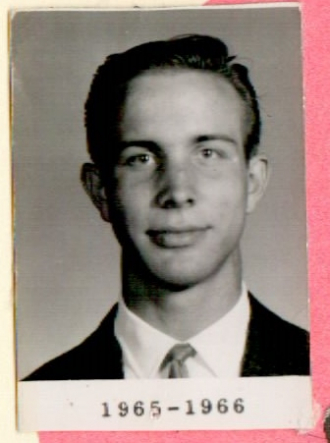

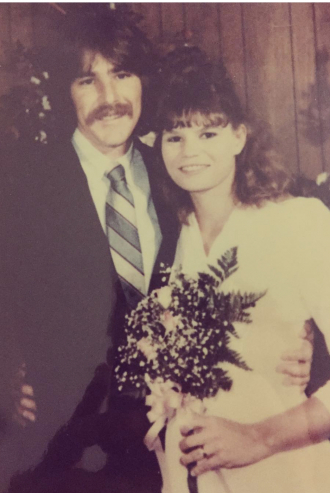

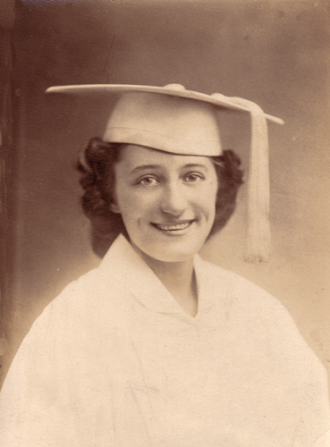


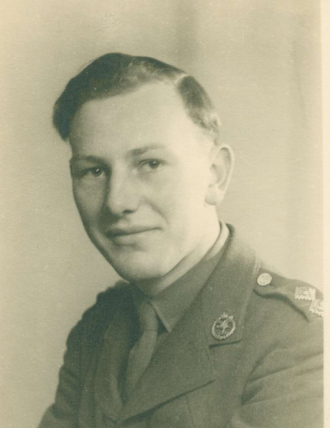

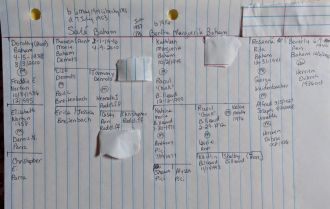



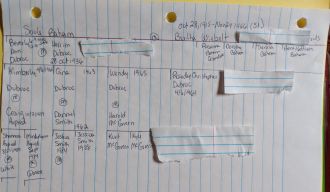


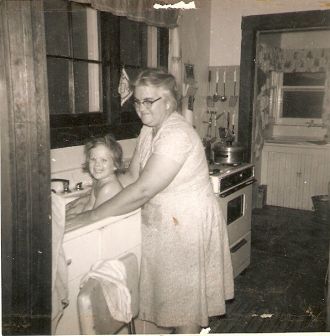

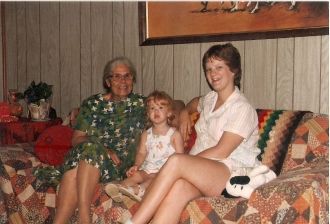




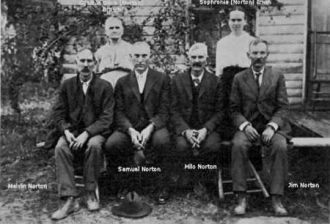
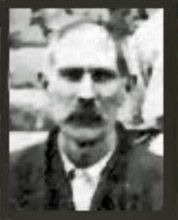




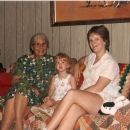
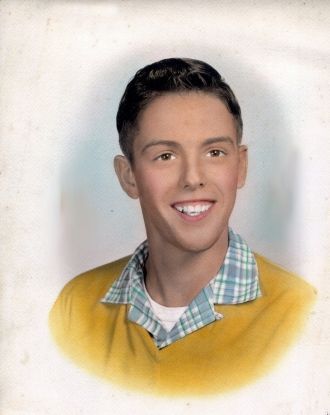


Mastoiditis:
It is said that strong memories can many times be associated with traumatic events and in my case my earliest has to do with intense pain. When I was about five years old I developed an ear infection which resulted in mastoiditis and I can remember when the specialist who was recommended by our family doctor came to our home at 603 Garfield Avenue in Jersey City, New Jersey to examine me, and my mother's tearful reaction when he told her that I would have to be hospitalized and operated on to drain the abscessed ear. I can still remember fighting the ether mask and how sick to my stomach I was when I finally awoke and also how heavy my head felt when I tried to get up.
Tonsilitis:
The next time I was hospitalized and given ether, I was a little older and wiser and did breathe slowly and deeply as I was told and as a result did not suffer the same after effects. This was for a minor overnight stay to remove my tonsils and adenoids when I was about eight years old.
Scarlet Fever:
I was the first born and may have been a little premature because I weighed only about five pounds. My brothers and my sister were bigger and were in the seven to eight pound range at birth. I only mention this because I seemed to be the one who was to get all the childhood diseases and one of the worst was a very bad case of scarlet fever. This was when I was about ten and I was kept under quarantine at home. I was isolated in a small room which had to be kept dark to protect my eyes and the doorway was covered by a sheet dampened by a solution of Lysol. The effect of the fever caused a mild heart murmur and as I continued to grow up, a gradual lessening of flexibility in my joints.
Physical Education:
I remember this very well because in junior high school we had to take physical education under the supervision of a special teacher in a gymnasium (in elementary school we just went outside to play games while the teachers watched) and the special teacher, a Mr. Schenkle, a grossly overweight, loud-mouthed, profane, bully was, to me, a sorry example to set as a result of physical education. Again, intense pain is the reason this is burned into my memory because when we were doing our exercises and were required to reach down and touch our toes, I could not get much further than my knees and Mr. Schenkle who loved to vocally excoriate "slackers" as he called the non-achievers, decided to help me by coming up behind me and pushing my back down. This just about finished me as he strained not only my back, but my hamstrings as well. I was not able to go to school for quite a while and never took physical education again. The subject is required under New Jersey state law but I was able to avoid it by having my doctor petition the school authorities to excuse me due to my heart murmur.
Second Mastoiditis:
I developed mastoiditis in my other ear when I was twelve years old but it was caught earlier and the operation was merely to puncture the eardrum to drain out the infection. It was performed at home by the same specialist, a Doctor Morris Pyle who had his office at Exchange Place in Jersey City.
Appendicitis:
My most serious medical problem was a burst appendix which resulted in gangrene and peritonitis and almost cost me my life. I remember the pain. I had the attack in high school when I was just sixteen and the nurse sent me home. We had no telephone then and really never had an automobile (my father had won a car in a church raffle some years before but he was such a poor driver that my mother had him sell it. Jersey city was not a good place to have a car anyway because there was no place to garage the car or to park it.) I lived about two miles from the high school and started to walk home. When I was one block away from my house my appendix must have burst because I remember trying to hold myself upright by grabbing the pole that held the sign for Stegman Street and Ocean Avenue but I gradually slipped down to my knees and then blacked out. I do not know who got me home or how my mother got word to the doctor but it took time before he could get to me and make the arrangements to get me to the hospital. It was an emergency operation which was performed about midnight and the delay undoubtedly led to the serious nature of the infection. I was in the hospital for a month and was given the last rites of the church. I was kept under sedation by morphine not only for the pain but also to keep me from writhing and inadvertently pulling out the tubes which were feeding me but also draining the infection. I lost twenty five pounds and came out as a living skeleton. Our family doctor, George Brick (the one who sent me to Dr. Pyle, the specialist and who arranged for me to be sent to the St. Francis hospital for the appendectomy) gave my father a recipe for a tonic to help me gain back some of the weight I had lost. It was like eggnog with milk and cinnamon but was fortified with sherry wine. My dad dutifully made this for me every day and at the same time made one for himself. It gradually helped me to gain back some of the lost weight but unfortunately caused him to gain weight he did not need. My general health improved considerably after the appendix operation and recovery and to compensate for the missing physical education at school I took up dynamic tension, a form of non-equipment exercise. I always like to run and so kept in good shape.
Grocery Store:
When I graduated from high school at sixteen I was, in a way, still a kid. I was small and shy but I got a full time job as a clerk in our local eagle grocery store. It was a two man store, the manager and me. The pay was five dollars a week for sixty hours of work but I did such a good job that the manager, an old man named Bill Miller who suffered from ulcers, gave me an extra fifty cents out of his own pocket because I did most of the work and let him take it easy if possible. The corner grocery store in 1937 was a far cry from the supermarkets of today. As the clerk of the two man staff I had to sweep the sidewalk every morning, put up or down the awnings as the weather dictated, wash the display windows once a week and when the grocery delivery was made the truckmen would just put the barrels and boxes on the sidewalk, the manager would confirm the delivery, sign for it and I would have to move it all inside to the back storeroom. Also much of the items such as flour, sugar, butter, milk, eggs, potatoes, etc. had to be broken down into smaller amounts such as pounds, dozens, quarts, etc. This was my job also. I had to restock the shelves by carefully removing the old items, wiping the shelf and then replacing the old items in front of the newer ones. When the store was busy I also would wait on customers by physically moving about the store to bring whatever they wanted to the counter, wrapping it up and also delivering it to their home if that was requested. That was usually worth a ten cent tip! There were no scanners then so you had to know all the prices and you had to add up the total (twice as a matter of fact for the required confirmation). After about a year I left Mr. Miller to work as an experienced clerk for the National Grocery Company at a salary of eight dollars a week. Grocery stores then were open six days a week from 8 am until 6 Monday through Thursday and from 8 a.m. until 9 p.m. on Friday and Saturday.
Eagle Printing Ink Company:
When I was eighteen I got a job with the Eagle Printing Ink Company as a shipping clerk on the recommendation of Pete Van Deusen who used to live next door to us on Garfield Avenue. Pete was seven years older than me and had the same job with Mr. Miller when he was just out of high school. He was a quality control inspector at the ink plant and was the manager of the company softball team in the Jersey City industrial league. He wanted me to play on the company team and I agreed to do it. I had played for him once before in the Sunday softball league in Bayside Park in Jersey City. About this time in my life I became a member of the Jersey City Lancers a local neighborhood sports club made up of young men for fun more than anything else. It was encouraged by the grownups because we played at the local parks or schools and generally kept out of trouble. Besides working at the ink plant and playing on their softball team in the summer, I also played softball and baseball for the Lancers on Sunday in the summer and football in the fall and winter. I played football for the Lancers on Thanksgiving day in 1939 and was hurt so that I could not go to work the next day at the ink company. Since we did not have a telephone, there was no way that I could report my reason for being absent and when I went to work on the following Monday I found out that I was fired.
Mutual Chemical Company:
I went to the state unemployment office to see if I could register for benefits. (I was not sure if my circumstances were covered) and instead they sent me on an interview for a job with the Mutual Chemical Company of America a large bulk processing and refining company in Jersey City. They were looking to hire a traffic clerk. I had never worked as a traffic clerk before or even knew what one did but I had observed how the shipping room operated at the ink company and told them I was willing to learn and they hired me for fifteen dollars for a five and a half day, forty-four hour week. The traffic clerk job was to keep the necessary records of all of the incoming raw materials and the outgoing finished products. It involved both railroad and trucking and domestic and overseas shipments. I worked under the traffic manager who was also the office manager and paymaster and he encouraged me to go with him to the local traffic club when they had educational seminars in order to broaden my knowledge.
World War II:
When our country went to war against the axis in December, 1941 I felt particularly obliged to contribute because one of my friends from the Lancers was killed in the attack on Pearl Harbor. He had joined the Navy only about six months before. I told them at the chemical company that I was going to enter the service and they said my job would be there when I returned. When I went to the Navy recruiting office in New York City in early 1942 to enlist, I failed the physical because I was underweight, had bad hearing and the heart murmur. They suggested that I try to gain eight pounds to bring me up to their standard for my height and build to ensure that I had no chronic health problem which was keeping my weight so low and to be re-tested. It took me several months to gain the weight (I had to eat a lot of bananas and cream plus a regular high calorie diet) and when I was re-tested I was sent to the officer in charge, a full Navy captain, who explained that he would have to make a recommendation because my hearing and heart were not 100%. He said the problems were slight but enough to keep me out under ordinary circumstances but this was wartime and if I still wanted to join the Navy he would approve a limited duty enlistment which would mean I could not serve in the submarine service or in the naval flight service. I agreed and was sent to the U.S. Naval training station in Newport, Rhode Island for boot camp then to Bedford Springs, Pennsylvania for radio school and then to Noroton Heights, Connecticut for special advanced communication school. I was finally assigned to the United States Navy armed guard service facility at the Brooklyn Naval Armory in late November of 1942. The armed guard service of the Navy provided gunners and communication personnel for allied shipping which moved in convoys under naval protection against German planes and submarines. My first ship, the James Iradell, was in the invasion of Casablanca in December, 1942 and in the invasion of Sicily in 1943. During my almost three years of sea duty I was on many ships and went to Cuba, Trinidad, Jamaica, England, Ireland, Scotland, France and Algeria as well, to some of these countries many times. I was discharged from the Navy at the Lido Beach Separation Center in Long Island in late 1945.